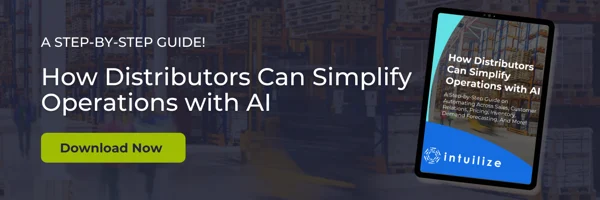.png)
In a notable issue of Industrial Supply, our CEO Nelson Valderrama, explores the substantial opportunity that lies in optimizing pricing strategies for industrial distributors. He emphasizes that while many distributors focus on increasing sales volume, refining pricing strategies can yield three to four times greater profit growth. Here’s a closer look at the key takeaways from Valderrama’s article.
Understanding Your Pricing Philosophy
 Valderrama categorizes companies into three distinct groups based on their approach to pricing and margin management:
Valderrama categorizes companies into three distinct groups based on their approach to pricing and margin management:
-
The Inertia Club:
-
These companies adhere to traditional pricing methods, relying on intuition and long-standing practices. They celebrate successes without delving deeply into the data, believing that their established business models are inherently effective.
-
-
The Play-Hards:
-
Companies in this group work diligently, with sales teams pushing volumes and seeking new opportunities. While they monitor gross margin percentages (GM%) and customer-level data, they often lack the time or resources to explore more efficient, data-driven solutions.
-
-
The Work Smarts:
-
Visionary leaders drive these companies, integrating pricing into their ERP systems to ensure optimal pricing decisions. They leverage decades of commercial intelligence, ensuring that even as personnel change, critical knowledge remains accessible and actionable within their systems.
-
The Power of Sales Variance Analysis
Valderrama introduces Sales Variance Analysis (SVA) as a fundamental tool for understanding sales fluctuations. By comparing sales across different periods and identifying the drivers behind these changes, distributors can gain actionable insights into their performance. The analysis typically focuses on three main factors:
-
Price Variance: Changes due to pricing adjustments.
-
Volume Variance: Variations in the quantity of items sold.
- Mix Variance: Differences arising from the mix of products or customers.

Applying SVA: Practical Examples
Valderrama provides a hypothetical scenario where a company experiences a $1.75M sales variance between two periods. He explains how each group—Inertia Club, Play-Hards, and Work Smarts—would respond to this variance:
- Inertia Club: Celebrates growth without delving into the details, attributing success to negotiation skills and customer relationships.
- Play-Hards: Investigates top customers and vendors, reviewing GM% and sales trends but often struggles with manual data analysis.
- Work Smarts: Quickly identifies the contributions of pricing, new business, and volume changes using SVA reports. They focus on understanding the root causes and implementing strategies to mitigate risks and capitalize on opportunities.
Embracing Data-Driven Decision Making
Valderrama underscores the importance of moving away from intuition-based decisions to a more data-driven approach. By leveraging the computational power available today, distributors can resolve business mysteries, understand sales drivers, and discuss profitability in clear, quantifiable terms.
Key Takeaways for Distributors
-
Measure What Matters:
-
Success in pricing initiatives can be gauged by isolating the impact of price changes at the customer level, providing true visibility into the effectiveness of price increases.
-
-
Identify Opportunities:
-
Spot cost changes and evaluate their magnitude to pass on to customers, ensuring that price adjustments are both strategic and effective.
-
-
Quantify Initiatives:
-
Analyze the impact of new product launches, customer acquisitions, and account penetration, differentiating these factors from pure volume and pricing changes.
-
Choose Your Path
Valderrama challenges distributors to reflect on which group they belong to and encourages them to adopt a work-smart approach. In an automated and evolving world, relying on outdated practices is not sustainable. By letting data drive decisions, distributors can unlock significant opportunities for growth and profitability. Now is the time to harness the power of pricing strategies and data analytics to stay competitive and maximize inventory ROI.
To learn more, check out the full article.








